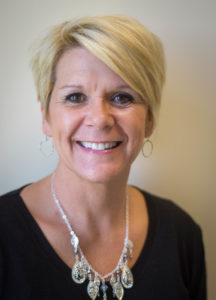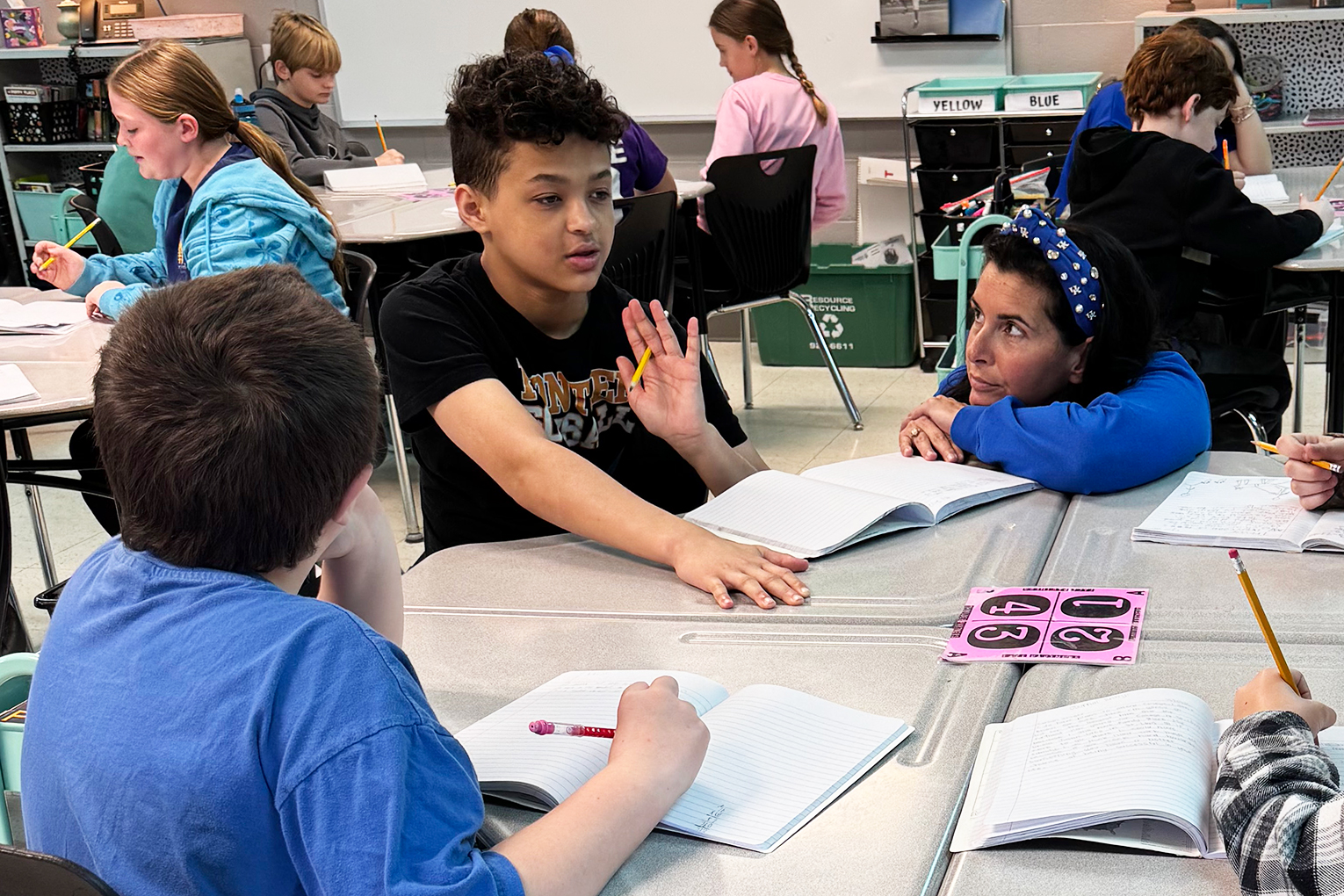By Brenna R. Kelly
Brenna.kelly@education.ky.gov
Fifth-grader Ethan Barker sits upright, his hands folded on the table, his shirt sleeves rolled up and looks into the camera.
“Goal setting has helped me as a learner by getting me going and giving me a goal for a test,” the Olive Hill Elementary student says confidently. “For example, when I set a goal, I’m determined to meet that goal because it makes me feel good about myself.”
Ethan’s video – in which his principal, Cherri Keaton, explains how her school uses goal setting and student data notebooks to improve student achievement at the Carter County school – is one of 34 short videos featuring Kentucky schools and districts that are getting it right.
The “Looks Who’s Getting it Right” videos are part of the Kentucky Department of Education’s (KDE) Novice Reduction For Gap Closure initiative, which is designed to improve classroom instruction in order to reduce the number of students performing at the novice, or lowest, level.

Linda Rains
“We were really trying to illustrate the great practices that are happening throughout the state,” said Linda Rains, KDE’s novice reduction coordinator. “Teachers want to see the real thing. They don’t want to just hear about what the research says; they want to see that research in action.”
Since the Novice Reduction initiative began in the 2015-16 school year, Rains and five novice reduction coaches have worked with 155 of the state’s 173 districts and met with more than 4,300 district and school leaders. The idea behind the effort is that targeting novice learners with specific strategies will improve student achievement across the board and also begin to narrow achievement gaps between specific groups of students – such as minorities and students in poverty – and their white or more economically advantaged classmates.
Closing achievement gaps has been one of the Kentucky Board Education’s top priorities and districts are required to address gaps under state law. In addition, novice reduction is now part of the accountability system and included in schools’ and district’s continuous improvement plans.
“We all want what’s best for students,” Rains said. “I want people to have an ethical, moral imperative to not accept novice for any learner, to agree that all students can rise above novice performance.”
Last school year, 11 districts participated in a Novice Reduction pilot program, but schools and districts don’t have to be part of the pilot to take on the work, Rains said. Schools and districts can use the Novice Reduction website to assess their needs and create a plan to target one or more of the six key core work processes that KDE has identified as essential to improving student achievement.
Rains hopes the videos, which are broken down by the work processes, will help educators understand what novice reduction is and entice more schools and districts to join in the work.
“I want it to whet their appetite and show them that there’s strategic decision making that has to happen in order to reduce novice learners and close gaps,” she said. “It’s not happenstance, it’s intentional.”
Educators can sometimes mistake busyness for a classroom strategy, Rains said. The team has honed in on strategies that research has proven work best with novice learners, she said.
“We want to help teachers with classroom strategies that truly impact all learners and are high impact enough to influence the novice learner,” she said.
Some of the videos were filmed at the pilot districts, while others were filmed at hub schools – previously low-performing schools that have made drastic turnarounds.
“We were trying to make it a virtual visit to hub schools so that more people could see those great practices in novice reduction that are going on there,” Rains said. “They really show the key core work process and the systems that schools have developed and what it looks like when those hit the seats.”
One of the videos from a hub school features Julie Hoff, curriculum specialist at Pulaski County High School. In the video, Hoff explains how her school uses the systems approach to continuous improvement to carry out their school’s focus of making sure all students are college- and career-ready.
“We were really excited to have an opportunity to talk about the things that we do to help our students,” she said. “We were flattered that they asked to do this.”
The school, which went from a Priority school to a Distinguished school, is featured in 11 of the videos. Though many people visit the school in hopes of learning their best practices, the videos will open up Pulaski County High School’s practices to teachers and district leaders that can’t make the trip, Hoff said.
“We really want to be a school that helps other schools. Anything that we’ve had success with, we want to share,” Hoff said. “We want to improve education for all students in Kentucky.”
Other videos on the site include performing instructional rounds, how to use a Plan-Do-Study-Act system, Response to Intervention, learning labs, Positive Behavior Intervention and Supports and several other strategies.
Olive Hill Elementary was chosen for its use of goal setting and student data notebooks. Those were two of the strategies that Keaton credits with improving student achievement at the 500-student school.
“We’ve come a long way, particularly in the past five years,” the principal said. “It’s because we’ve implemented goal setting at all levels and we analyze data down to the smallest detail, and then our teachers meet together in their professional learning communities to determine the next steps.”
The school is now labeled Proficient/Progress and has a High Progress designation.
Keaton said she was happy to share her school’s work for the videos, but was a bit hesitant about being on camera.
“When you’ve never done anything like that before, you’re nervous and you’re thinking this is going to be on the Kentucky Department of Education website and people will see it. I wanted to highlight all of our staff and students’ accomplishments and convey that reaching your goals takes time,” she said. “Ethan, of course, did much better than any of the adults.”
MORE INFO …
Linda Rains Linda.Rains2@education.ky.gov
NOVICE REDUCTION COACHES
Juett Wells Juett.Wells@education.ky.gov Central Region
Jennifer Steidel-Jones Jennifer.Steidel-Jones@education.ky.gov North Region
J’Nora Anderson, Jnora.Anderson@education.ky.gov West Region
Wanetta Morrow, Wanetta.Morrow@education.ky.gov South Region
Vanessa Dials, Vanessa.Dials@education.ky.gov East Region
MORE KENTUCKY TEACHER STORIES ABOUT NOVICE REDUCTION
Taking on the gap
State will focus on Novice reduction to close achievement gaps




Leave A Comment